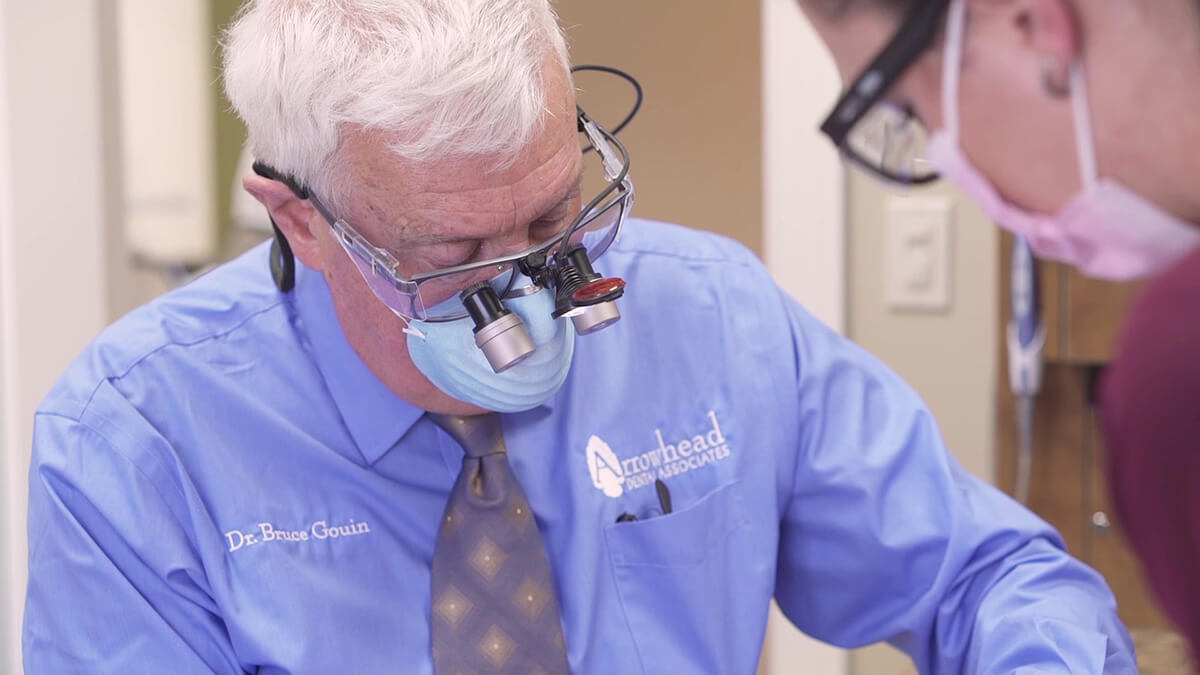Post-Op Instructions

In the event of life threatening conditions such as severe infection or allergy, please call 911 or visit the emergency room.
Most dental procedures do not create unwanted post-operative discomfort but when encountered an over the counter anti-inflammatory like Advil, aspirin or Motrin should be sufficient to address the pain.
As in any dental procedure in which local anesthetic has been used please wait for its effects to wear off completely before you eat. This is to avoid accidentally biting numbed soft tissue in your mouth. Unless told otherwise you may eat normally after the numbness has worn off.
Please remember to follow all instructions given to you following your dental treatment.
Additional instructions for specific dental procedures are given below; simply click on the procedure to learn more.
You can always call our office with questions or clarification on post-operative instructions regarding your treatment.
Bleeding normally stops within an hour of surgery. If it persists or resumes it can usually be stopped by wadding up the extra cotton gauze you were given and placing it over the extraction site where bleeding is coming from, place firm biting pressure. A few tea bags soaked in cold water can also be used. Generally, 20-30 minutes of pressure from the gauze or tea bag will stop any bleeding. If bleeding persists please call our office.
While not common the most likely unwanted side effects from surgery are pain, bleeding, dry socket and infection. Depending on the extent of your surgery, sutures may have been placed. It is normal to feel the loose ends, they are not falling out. If they are re-sorbable they will disappear, if not you will have an appointment to have them removed.
Post-operative pain is not unusual after surgery. You may have been given a stronger pain medication. Please follow the directions and do not combine it with additional over the counter pain medications unless instructed to do so.
After extraction blood clots form in the extraction site stopping the bleeding and allowing normal healing. It is important not to disturb or displace the clots in the first few days. Avoid aggressive brushing or drinking from straws. Do not attempt to clean the extraction site it is best left alone.
Dry socket is when the blood clot is lost from the extraction site causing delayed healing and persistent pain during the healing process, this is not an infection. Please call our office and we will give you a healing gel to apply.
- Bleeding: place folded gauze moistened with water directly over the wound and bite down firmly. Change gauze once every hour ONLY if bleeding has not stopped. If bleeding has not stopped, you may bite down on a moistened tea bag. Do this for 1-hour, repeat once ONLY if needed to stop the bleeding.
- Do Not Lie Flat. Keep your head elevated on 2 or 3 pillows, only if you are still bleeding.
- To prevent swelling, apply ice to the outside of the affected area on and off for 20 minutes at a time. Do not use ice after bedtime tonight. Ig you still have some swelling after 48 hours and provided the bleeding has stopped, apply moist heat with a hot towel, to the outside of the affected area.
- Foods / Diet: Your diet for the first 3 to 4 days should be soft foods or liquids, cold or at room temperature and avoid foods with smaller particles.
- Suggested diet: milkshakes, pudding, custard, Jell-O, juices, yogurt without seeds, applesauce, mashed potatoes, or anything that can be put through the blender.
- Teeth Brushing / Rinsing Recommendations: Brush teeth as normal, avoiding areas of extractions with the bristles of the toothbrush. No rinsing or vigorous swishing is recommended. Avoid mouth wash/saltwater rinses. Gently rinse with water after brushing teeth. Return to normal brushing/rinsing after 7 days post-extraction.
- If medication was not prescribed for discomfort, drink a milkshake, milk, or juice to coat your stomach before taking the medication. NO SMOKING OR ALCOHOLIC BEVERAGES FOR 7 DAYS WHILE ON MEDICATION.
- Sutures: Dissolvable sutures (clear) will fall out in 4-7 days. Sutures can be kept clean by using a cotton swab moistened with warm water.
- LIMIT PHYSICAL ACTIVITY for the first 48 – 2 hours depending on the swelling and pain.
- In case of emergency or to report unusual symptoms, call Arrowhead Dental Associates at 401-364-6300 and ask for Lauren or Dr. Nicholas.
It is necessary your child bites on the gauze pad provided for a few minutes to ease any bleeding. Change gauze as needed.
A diet of hard / crunchy foods should be avoided during the healing period.
Thank you for allowing us to care for your child today. Please call our office with any questions or concerns you may have.
During your first appointment for a crown or bridge a temporary restoration was placed over your tooth. We only use a temporary cement to secure it so we can remove it easily at your next appointment. It is important that you avoid things that could dislodge it. Avoid chewing on tacky foods; avoid very hard crunchy foods as the temporary crown is only plastic. When you floss pull the floss out from the side instead of pulling it down. If the temporary crown or bridge feels high or does come off please call our office and we will arrange to have it re-cemented back on.
You may experience some sensitivity following your appointments, this is usually temporary and is easily treated with an over the counter medication like Advil or Motrin.
Your permanent crown and bridge can be treated as a normal tooth. You can floss and brush normally. The bite should feel normal, if it feels high after using it for a few days please call our office.
In the unlikely event of continued sensitivity, loosening or swelling please call our office.
It’s normal to experience some hot, cold, and pressure sensitivity. Removing tooth structure and placement of new materials may result in a period of adjustment. Your gums may also be sore for several days. Rinse three times a day with warm salt water (a tsp of salt in a cup of warm water, rinse-swish-spit) to reduce pain and swelling. Mild pain medication should ease your discomfort during the adjustment period.
Don’t be concerned if your speech is affected for the first few days. You’ll quickly adapt and be speaking normally. You may notice increased salivary flow. Your brain may respond to the new size and shape of your teeth by increasing salivary flow. This should subside to normal within a week or two.
Daily plaque removal is critical for the long term success of your dental work. Maintain a regular oral hygiene route. Daily brushing and flossing is a must. Regular cleaning appointments in our office are also critically important. We’ll use the appropriate cleaning abrasives and techniques for your specific cosmetic work.
It’s important to change habits to protect your new teeth. Any food that could chip, crack, or damage your natural teeth can do the same to your new cosmetic restorations. Avoid sticky candies, any unusually hard foods substances, (such as peanut brittle, fingernails, pencils, or ice). Avoid or minimize your use of foods that stain such as tea, coffee, red wine and berries. Smoking will quickly yellow your teeth.
Let us know if you grind your teeth at night or engage in sports so we can make you a custom mouthguard. Adjusting to the look and feel of your new smile will take time. If you have any problems or concerns, we always welcome your questions. Thank you very much for choosing Arrowhead Dental Associates for your dental treatment.
Between appointments it is common (and not a problem) for a small portion of your temporary filling to wear away or break off. If the entire filling falls out, or if a temporary crown comes off, call us so that it can be replaced.
It’s normal to experience some discomfort for several days after a root canal appointment, especially when chewing. To control discomfort, take pain medication as recommended. To further reduce pain and swelling, rinse three times a day with warm salt water (a tsp of salt in a cup of warm water, rinse-swish-spit).
If antibiotics are prescribed, continue to take them as prescribed, even if all symptoms and signs of infection are gone. To protect the tooth and help keep your temporary in place, avoid eating all sticky foods (especially gum), hard foods, and if possible, chew only on the opposite side of your mouth. It’s important to continue to brush and floss normally.
Usually, the last step after root canal treatment is the placement of a crown on the tooth. A crown covers and protects the tooth from breaking in the future. If your bite feels uneven, if you have persistent swelling or pain, or if you have nay other questions or concerns, please call our office.
Depending on the extent of the filling and amount of decay present you may experience some post-operative sensitivity. This is usually temporary and can be addressed by taking an over the counter anti-inflammatory medication such as Advil.
In the unlikely event you experience severe pain or swelling please call our office.
Sometimes when the anesthetic wears off you may realize that the bite is not correct and the filing may be too high. We carefully check your bite before you leave but if the bite feels noticeable high after the anesthetic feeling wears off please call our office as it will likely need to be adjusted. The filling will not wear down on its own.
- Foods / Diet: your diet for the first 24 hours should be soft foods or liquids, cold or at room temperature, and avoid food with small particles.
- Suggested diet: milkshakes, pudding, Jell-O, juices, yogurt without seeds, applesauce, mashed potatoes, or anything that could be put through the blender.
- Do not rinse or brush for 18 hours. After 18 hours, resume brushing, except in or around surgical site, rinse with 10 ounces of peridex prescribed every morning and evening for 7 days.
- Dissolvable sutures (clear) will fall out in 4-7 days. Sutures can be kept clean by using a cotton swab moistened with warm water.
- Bleeding: place folded gauze moistened with water directly over the wound and bite down firmly. Change gauze once every ½ hour until bleeding has stopped.
- To help swelling, apply ice to the outside of the affected area on and off for 20 minutes at a time. Do not use ice after bedtime tonight. If you still have some swelling after 48 hours and provided the bleeding has stopped, apply moist heat with a towel to the outside of the affected area.
- If bone-grafting material was used, you may experience some sandy/gritty particles in the mouth and more than normal swelling.
- If medication was prescribed for discomfort, drink a milkshake, milk or juice to coat your stomach before taking the medication. NO SMOKING OR ALCOHOLIC BEVERAGES FOR 7 DAYS WHILE ON MEDICATION.
- In case of emergency or to report unusual symptoms, call Arrowhead Dental Associates at 401-364-6300 and ask for Lauren or Dr. Nicholas.
